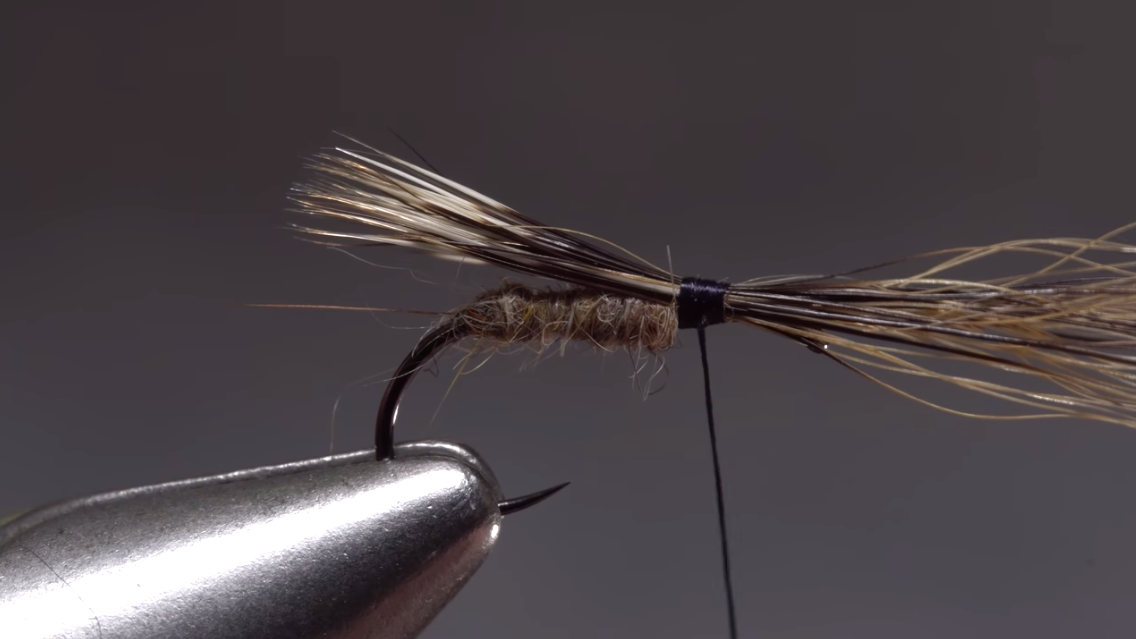It’s that time of year on a lot of western trout streams — the annual “Mother’s Day” caddis hatches are upon us, and it’s time to start throwing dry flies at hungry trout.
Caddis patterns come in all shapes and sizes — some are a little more artsy and impressionistic, and others appear more practical and representative of the flies that are actually on the water.
Above, Tim Flagler ties maybe the simplest of caddis patterns — Eric Leiser’s Chuck Caddis. As Flager puts in the Chuck Caddis is “extremely suggestive,” simple and a little bit elegant, too. I like the simplicity and the fact that it can be tied using all natural ingredients, something I’m trying to do more of when I tie my own flies.
The pattern calls for woodchuck fur for the fly’s tail, and if you can get it, it really works great. Deer or elk will suffice if you have some on hand. The hare’s mask dubbing is a fairly universal material, but you should also feel free to substitute it out for whatever dubbing material you have on your bench. I realize that, during the pandemic, it might be hard to get to the fly shop in person for materials, so consider ordering materials online from some of our great TU Business Members that we feature each Friday in the TU newsletter (if you’re not getting the newsletter, you’re missing out!).
Then, on your local rivers and streams (remember to stay as close to home as you can during the COVID-19 crisis and maintain your distance from fellow anglers), put the Chuck Caddis to work. It’s an excellent pattern for spring caddis hatches. Enjoy.



